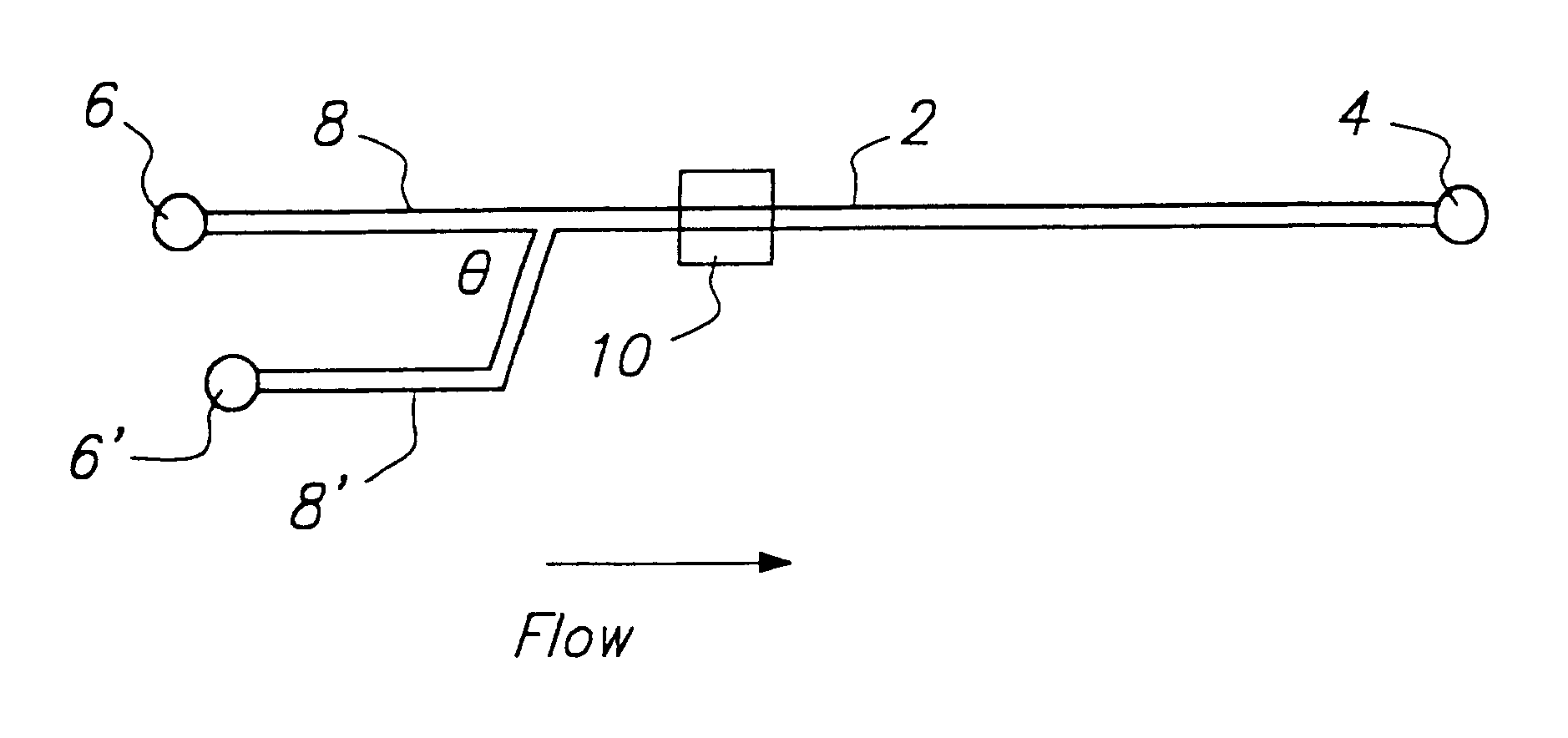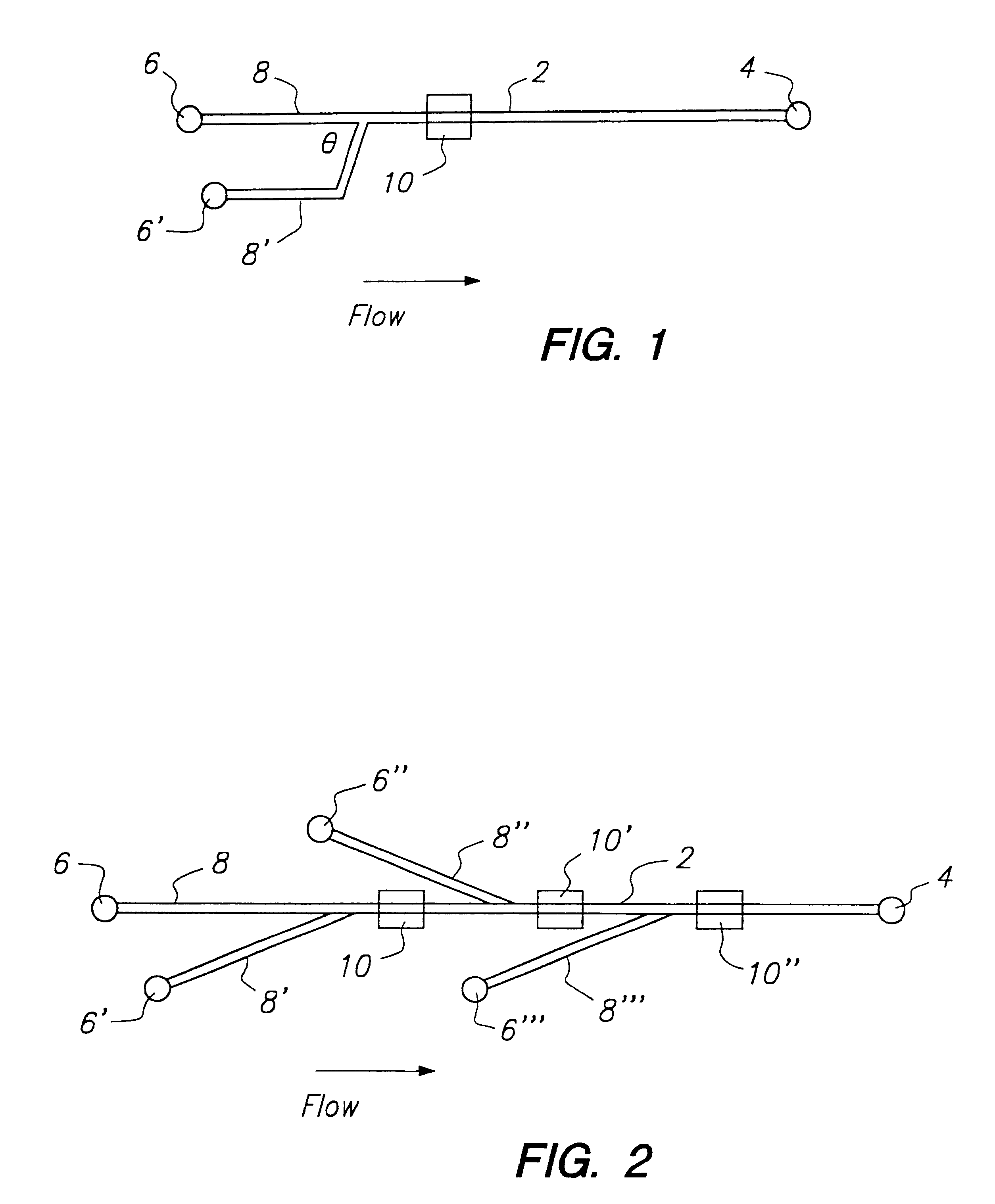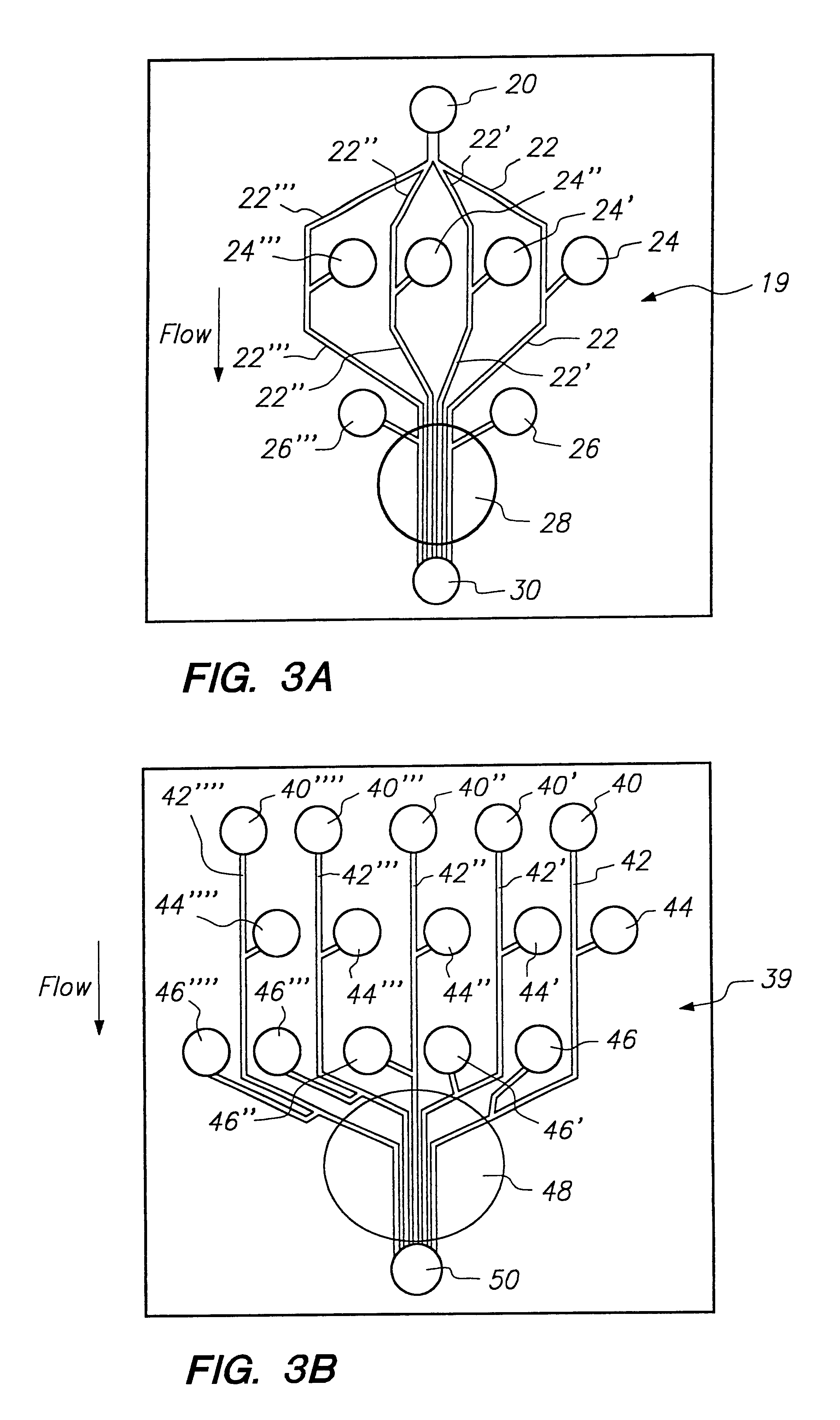Microfluidic system and methods of use
a microfluidic system and microfluidic technology, applied in the direction of fluid speed measurement, positive displacement liquid engine, chemical/physical/physicochemical process energy-based, etc., can solve the problems of limiting the ability to resolve the effect of a compound, the inability to observe the effect on a cell before, during and after the event,
- Summary
- Abstract
- Description
- Claims
- Application Information
AI Technical Summary
Problems solved by technology
Method used
Image
Examples
example i
Preparation of the Microchip Device
[0121]Glass devices (3 in.×3 in.) were fabricated at the Alberta Microelectronic Centre, using a modified silicon micromachining technique. (7) The substrate was a 600-μm-thick 0211 glass plate (Corning Glass Works, Corning, N.Y.). Channels of either 15 or 30 μm depth were etched on one glass plate. The lengths and widths of the channels are depicted in FIGS. 5A and 5B. A cover plate, with holes drilled for external access was thermally bonded to the etched plate using the following temperature program: 0.5 h at 440° C., 0.5 h at 473° C., 6 h at 605° C., 0.5 h at 473° C., followed by cooling overnight. Small plastic pipet tubes, glued around the drilled holes using epoxy resin, were used as device reservoirs to contain sample or buffer solutions. Pt wires were inserted for electrical contact. Some chips were coated internally using AQUASIL (Pierce, Rockford, Ill.). A 1% aqueous solution was forced into the channels by syringe, removed under vacuum,...
example ii
Electrophoretic Mobility in a Microchip
Buffer Solutions and Reagents
[0123]A phosphate buffer, 40 mM each of NA2HPO4 and KH2PO4 (BDH analytical grade) was adjusted to pH 7.4 with either NaOH or HCl and used as an isotonic buffer for canine erythrocytes. (The plasma concentrations of Na31 and K− in canine plasma are 94 and 6 mM. respectively. (8,9) Assuming a monoanion as the counterion gives as osmolarity of 200 mM, equal to that of the buffer prepared.) A hypotonic solvent, deionized water, was used to prepare yeast or E. coli cell suspensions. Sodium dodecyl sulfate (SDS, Serva, analytical grade) was prepared at 3 mM (0.1 wt %) in deionized water. Other chemicals were reagent grade and were used without further purification.
Cell Samples
[0124]Red blood cells of a healthy dog were obtained from Heritage Medical Research Centre (Edmonton, AB, Canada). Blood samples were collected using EDTA as the anticoagulant. These were centrifuged for separation into various blood components. Aft...
example iii
[0142]Calcium influx is involved in major cell functions and responses of lymphocytes. In this assay, the calcium ion influx into the lymphocytes is induced by a calcium releasing agent, calcimycin (A23187, calcium ionophore). The rise in the concentration of free intracellular calcium ions results in an increase in fluorescent signal from cells pretreated with a fluorescing agent. The kinetic results of calcium influx may be studied with the stop flow method in the microfluidic device.
[0143]There are several steps in the study of the process of calcium influx. First, an activator, calcimycin (A23187 calcium ionophore) and the calcium ion complex must adsorb on the cell surface. Second, the complex has to diffuse through the cell membrane. Third, once inside the cytosol, dissociation between the A23187 and calcium ion has to take place. Finally, a fluorescing agent, FLUO-3 AM, complexes with the released calcium and produces emitted light that can be detected (fl...
PUM
| Property | Measurement | Unit |
|---|---|---|
| upstream angle | aaaaa | aaaaa |
| thick | aaaaa | aaaaa |
| thick | aaaaa | aaaaa |
Abstract
Description
Claims
Application Information
 Login to View More
Login to View More - R&D
- Intellectual Property
- Life Sciences
- Materials
- Tech Scout
- Unparalleled Data Quality
- Higher Quality Content
- 60% Fewer Hallucinations
Browse by: Latest US Patents, China's latest patents, Technical Efficacy Thesaurus, Application Domain, Technology Topic, Popular Technical Reports.
© 2025 PatSnap. All rights reserved.Legal|Privacy policy|Modern Slavery Act Transparency Statement|Sitemap|About US| Contact US: help@patsnap.com



